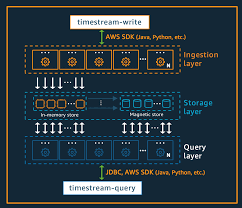Amazon Timestream
About Amazon Timestream
Amazon Timestream Pricing
Please contact Amazon directly for pricing information.
Free trial:
Not Available
Free version:
Not Available

Most Helpful Reviews for Amazon Timestream
1 Review
Rakesh
Computer & Network Security, 2-10 employees
Used daily for less than 2 years
OVERALL RATING:
5
EASE OF USE
4
VALUE FOR MONEY
5
CUSTOMER SUPPORT
4
FUNCTIONALITY
5
Reviewed May 2023
Amazon Timestream - Managed Service great offering compared to InfluxDB or GrafanaCloud
Time-Saver and also ease of integration helped us eliminate learning curve
PROSMost of our workloads are IOT based and we rely on time-series databases very heavily even to the point of analysing a sensor state, having tried self-hosting options and the learning curve involved, a managed service like Amazon Time-stream helps us to scale.
CONSSupport for Formats can be a little friendly, like return values sometimes needs to be type-casted to fit the programming language
Reasons for switching to Amazon Timestream
Managed and Self-hosted services both had issues and since we were in the trial there was nothing much we could get help with and secondly, intention to move everything to serverless was also one of the factors to move to AWS
